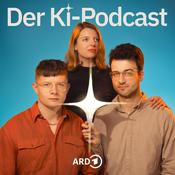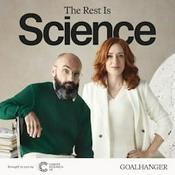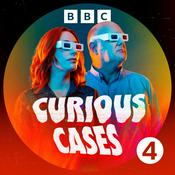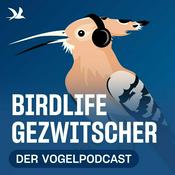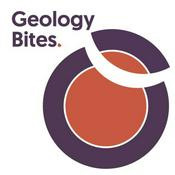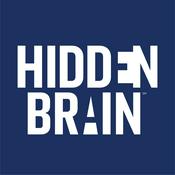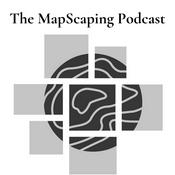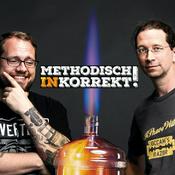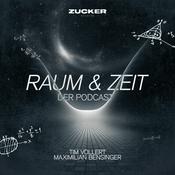The User Research Strategist: UXR | Impact | Career
Nikki Anderson
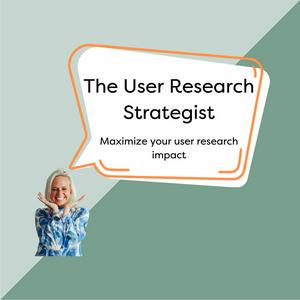
Neueste Episode
Verfügbare Folgen
5 von 89
- Pragmatism vs. Rigor: The Researcher’s Balancing Act | Raymond Tiong (Dext)Listen now on Apple, Spotify, and YouTube.—Ray is a designer-turned-researcher. He grew up in New Zealand but moved to the UK last year.His career started in graphic design and advertising, but he’s also studied art history and worked as a brand strategist and innovation consultant before moving into UX. He was a product designer before officially pivoting to UX research.He is passionate about the craft of UX research, so is naturally drawn towards rigour and detail. But there’s definitely a balance to be mindful of, so lately he’s been enjoying the challenge of taking a more pragmatic approach to cut through the noise at work and maximise impact.In our conversation, we discuss:* How Raymond moved from design to research and why his messy, creative path helps him make peace with constraints.* Why “just enough” research is often the most realistic (and still valuable) kind.* Dealing with stakeholders who want statistical significance and to act on N=1 quotes.* What makes a one-pager actually work (hint: it’s not cramming 14 bullet points into 10pt font).* How to reframe constraints as creative challenges, instead of just reasons to cry in a spreadsheet.Some takeaways:* Rigor isn’t one thing. There’s a difference between medical research and a usability test for a SaaS dashboard. Raymond reminds us to stop chasing perfection and start asking: What’s the risk? What’s the goal? What’s actually good enough here?* You don’t have to be the loudest voice in the room to be the expert. Sometimes the best way to build trust is not to say “trust me, I’m the expert,” but to bring the right method to the table and explain why it fits. Raymond shares how he uses method knowledge to guide teams—without pulling rank.* Constraints aren’t the enemy, they’re the brief. That tight deadline or limited budget? Treat it like a design prompt. What can you strip away? What creative method still works? That shift in mindset changes everything from energy to output.* Scoping is where the real power is. Raymond shares a sharp approach to collaborative scoping: show a strawman plan and let stakeholders rip it apart. It builds alignment faster and helps surface hidden assumptions, risks, and trade-offs without ego wars.* Your research summary isn’t for you. Your one-pager should pass the 40-second CEO elevator ride test. Raymond breaks down his 3-column template and shares why the takeaways column matters more than your favorite quote or clever insight. It’s about what they need to do next.Where to find Raymond:* ADPList mentor profile page* LinkedIn* Medium Stop piecing it together. Start leading the work.The Everything UXR Bundle is for researchers who are tired of duct-taping free templates and second-guessing what good looks like.You get my complete set of toolkits, templates, and strategy guides. used by teams across Google, Spotify, , to run credible research, influence decisions, and actually grow in your role.It’s built to save you time, raise your game, and make you the person people turn to—not around.→ Save 140+ hours a year with ready-to-use templates and frameworks→ Boost productivity by 40% with tools that cut admin and sharpen your focus→ Increase research adoption by 50% through clearer, faster, more strategic deliveryInterested in sponsoring the podcast?Interested in sponsoring or advertising on this podcast? I’m always looking to partner with brands and businesses that align with my audience. Book a call or email me at [email protected] to learn more about sponsorship opportunities!The views and opinions expressed by the guests on this podcast are their own and do not necessarily reflect the views, positions, or policies of the host, the podcast, or any affiliated organizations or sponsors. This is a public episode. If you'd like to discuss this with other subscribers or get access to bonus episodes, visit www.userresearchstrategist.com/subscribe--------27:52
- Beyond the Report | Matt Thomas (Motability Operations)Listen now on Apple, Spotify, and YouTube.—Matt Thomas is a Design, Research, and Product leader at Motability Operations where he leads the Design and Research efforts for a range of products, from a commerce platform for selling used cars to colleague-facing tools that support that website. His team also designs for a vehicle refurbishment workshop, a completely different challenge with a unique set of users, which keeps things interesting.They work closely with Product and Technology teams to bring these products to life, always focusing on learning from the people who use them. He is super passionate about broadening where the team gathers insights and making research more accessible, so teams can make better product decisions.In our conversation, we discuss:* How Matt defines “broadening research” and why it starts outside of formal studies.* Real-world examples of overlooked insight sources like sales calls, account managers, and field teams.* The internal system Matt’s team uses to collect, tag, and feed sales feedback into their repository every day.* Why traditional research reports don’t always land and what to try instead.* Tactics for building trust and buy-in, even when you’re blocked from direct customer access.Some takeaways:* Matt encourages researchers to stop thinking of research as only formal studies. Some of the richest data comes from support calls, onboarding conversations, and field visits. These sources already exist in most companies but often get ignored because they don’t look like traditional research. When you tap into them, you’re bringing context into the room that would otherwise stay invisible.* It’s tempting to jump straight into tagging or setting up automations, but Matt suggests beginning with a conversation. Ask a customer-facing teammate what they’re hearing. Offer to sit with them for an hour or buy them coffee. Building trust first, then showing how their insights feed into decisions, opens more doors long-term than asking for data access right away.* Matt’s team gets sales feedback emailed to them daily and loads it into their repository in batches. But even without automation, he recommends reviewing 20 feedback items a day which is just enough to build a habit and gather useful patterns. That creates a log of real impact you can use later to justify hiring or tooling decisions. Don’t aim to boil the ocean; aim to show traction.* The goal isn’t to create a polished report. It’s to influence a decision. Matt’s team shares snippets via Slack or email, hosts research gallery walk-throughs, and tests lightweight formats like social-style insight posts. Different stakeholders need different communication and just because a report is well-written doesn’t mean it will be read.* From usability bingo nights to Iron Man-style gallery sessions, Matt embraces experimentation in how research is shared. Some people need a sticky note wall. Some need a voice clip in their inbox. If one format doesn’t land, try another. The most impactful insights often come wrapped in something a little unexpected but perfectly timed.Where to find Matt:* LinkedInStop piecing it together. Start leading the work.The Everything UXR Bundle is for researchers who are tired of duct-taping free templates and second-guessing what good looks like.You get my complete set of toolkits, templates, and strategy guides. used by teams across Google, Spotify, , to run credible research, influence decisions, and actually grow in your role.It’s built to save you time, raise your game, and make you the person people turn to—not around.→ Save 140+ hours a year with ready-to-use templates and frameworks→ Boost productivity by 40% with tools that cut admin and sharpen your focus→ Increase research adoption by 50% through clearer, faster, more strategic deliveryInterested in sponsoring the podcast?Interested in sponsoring or advertising on this podcast? I’m always looking to partner with brands and businesses that align with my audience. Book a call or email me at [email protected] to learn more about sponsorship opportunities!The views and opinions expressed by the guests on this podcast are their own and do not necessarily reflect the views, positions, or policies of the host, the podcast, or any affiliated organizations or sponsors. This is a public episode. If you'd like to discuss this with other subscribers or get access to bonus episodes, visit www.userresearchstrategist.com/subscribe--------26:37
- Getting Strategic with Triangulation | Brett Kurjewski (Accelerant Research)Listen now on Apple, Spotify, and YouTube.—Brett Krajewski is the Vice President of Research & Growth at Accelerant Research, where he leads the research and client solutions teams, delivering innovative insights to empower businesses and many fortune 500 companies. He was most recently featured on an episode of Awkward Silences Podcast, and has some upcoming webinars. With a career spanning both in-house industry roles and consulting/agency leadership, Brett has built and led high-performing, multi-method research teams for Fortune 50 companies. His past roles include Head of Design Research: Customer at Walmart and Lead of Product Research at Lowe’s, where he drove customer-focused innovation and strategy. Beyond professionally, Brett has trained Seeing Eye dogs for the past 25 years, combining his love of service and animals, and is also a licensed pilot who enjoys navigating the skies somewhere new whenever possible. Brett’s unique blend of professional expertise and personal passions reflects his curiosity, drive, and commitment to making an impact.In our conversation, we discuss:* How Brett discovered triangulation only later in his career and why it changed everything about how he approached impact.* What meta-analysis actually means in practice, and why it’s an underrated starting point for faster, smarter research.* Why researchers need to stop acting like lone wolves and start working like strategic collaborators.* How to balance qualitative and quantitative data without waiting for things to be perfect.* The small, consistent actions that build trust and how they differ when you’re in-house versus agency-side.Some takeaways:* Early in his career, Brett saw research as “the answer.” Later, he realized that data triangulation, pulling from primary research, internal metrics, heuristics, and third-party sources, helped him tell richer, more balanced stories that actually got traction. It wasn’t about perfection or overloading people with data. It was about showing how user needs and business goals intersect, and building stories from multiple truths rather than a single source.* Rather than constantly commissioning new work, Brett champions meta-analysis, which involves reviewing what’s already been done across different departments. That might include past research, customer insights, agency data, or marketing reports. Doing this upfront reveals known truths, uncovers gaps, and often means you only need to research 2 out of 10 questions, not all 10. It makes you faster, more relevant, and a better partner to the business.* Trying to solve everything at once kills momentum. Brett advises researchers to start with small, tangible wins, like answering two key questions fast with an unmoderated test. Showing up early with something useful, rather than disappearing and delivering a polished report weeks later, builds credibility. These quick contributions earn you the right to do deeper, more strategic work down the line.* Too many researchers say they want a seat at the table, then go off and work solo. Brett emphasizes bringing stakeholders along for the ride and letting them weigh in, see progress, and feel ownership. That doesn’t mean caving to their agenda. It means understanding what they care about, folding it into your framing, and using that shared language to build alignment and influence.* One of the most powerful habits Brett adopted: releasing insights in milestones. Whether you’re in-house or agency, think in chunks, such as sharing the competitive analysis while you’re still synthesizing interviews. Share directional trends while still in the field. Transparency builds trust, helps teams move faster, and reminds everyone that research is ongoing, not just a one-time delivery. Show them how the sausage is made, not just the final plate.Where to find Brett:* LinkedIn* Transforming Insights into Results: Advancing influence in Corporate landscapes from the bottom up* Innovate or Imitate: Redefining Design and Research on our Terms Stop piecing it together. Start leading the work.The Everything UXR Bundle is for researchers who are tired of duct-taping free templates and second-guessing what good looks like.You get my complete set of toolkits, templates, and strategy guides. used by teams across Google, Spotify, , to run credible research, influence decisions, and actually grow in your role.It’s built to save you time, raise your game, and make you the person people turn to—not around.→ Save 140+ hours a year with ready-to-use templates and frameworks→ Boost productivity by 40% with tools that cut admin and sharpen your focus→ Increase research adoption by 50% through clearer, faster, more strategic deliveryInterested in sponsoring the podcast?Interested in sponsoring or advertising on this podcast? I’m always looking to partner with brands and businesses that align with my audience. Book a call or email me at [email protected] to learn more about sponsorship opportunities!The views and opinions expressed by the guests on this podcast are their own and do not necessarily reflect the views, positions, or policies of the host, the podcast, or any affiliated organizations or sponsors. This is a public episode. If you'd like to discuss this with other subscribers or get access to bonus episodes, visit www.userresearchstrategist.com/subscribe--------27:32
- How Games UXR Actually Works | Mark Cox (Lloyd's Banking Group)Listen now on Apple, Spotify, and YouTube.—Mark Cox is a lead researcher and the Design Research and Service Design Agency Spotless in London. He’s been in research for about 7 years, and because he’s operated in an agency, he’s been lucky enough to work on all kinds of projects in different industries. The hat he currently wears is as a Games User Researcher. In our conversation, we discuss:* The early origins of games UXR and how it still leans on its Atari-era roots.* Why you can’t apply traditional UX timelines and methods to game development.* What “positive friction” means and when player frustration is part of the design.* How Mark tests narrative and art concepts with non-interactive prototypes.* Where aspiring games UXRs should actually start if they want to break in.Some takeaways:* Unlike traditional UX, games research isn’t focused on removing friction, it’s about shaping it. Some frustration is intentional, and part of the fun. Mark works with teams to understand when challenge adds value and when it tips into player drop-off. This means the researcher’s job is to trace the emotional arc of gameplay, not just catch bugs or confusion.* Narrative and concept testing often happens with no prototype in sight. Mark tests scripts, art, and design direction using static slides, paper wireframes, or storyboards. Focus groups are a big part of this phase, helping teams hear how players talk about characters and world-building. If the story isn’t landing early on, it rarely gets better by launch.* Mark outlined multiple types of playtesting: usability (can players navigate the UI?), appeal (do they value it?), and retention or engagement (will they come back?). These studies often include layered methods: observation, think-alouds, surveys triggered after specific in-game moments, and even eye-tracking. A good playtest doesn’t just show how players behave, it helps explain why they behave that way.* The “fun” question is real, but rarely useful. Teams often ask “Is this fun?” but the better question is “What kind of fun are we aiming for?” Is the goal mastery? Escape? Social chaos? Mark pushes for clarity on the player emotion the team is chasing, so the research can help track whether that’s happening and where it’s falling short.* Breaking into games UXR means doing the work before you get the job. Mark suggests joining Discords like the GamesUR SIG, getting involved in beta testing communities, and finding ways to observe or participate in amateur game design groups. Hiring managers want to see real curiosity and a strong grasp of the medium. That doesn’t mean you need a formal background in games, it means you’ve tried things, reflected on them, and learned. Researching games starts by showing you understand what makes them work.Where to find Mark:* LinkedInStop piecing it together. Start leading the work.The Everything UXR Bundle is for researchers who are tired of duct-taping free templates and second-guessing what good looks like.You get my complete set of toolkits, templates, and strategy guides. used by teams across Google, Spotify, , to run credible research, influence decisions, and actually grow in your role.It’s built to save you time, raise your game, and make you the person people turn to—not around.→ Save 140+ hours a year with ready-to-use templates and frameworks→ Boost productivity by 40% with tools that cut admin and sharpen your focus→ Increase research adoption by 50% through clearer, faster, more strategic deliveryInterested in sponsoring the podcast?Interested in sponsoring or advertising on this podcast? I’m always looking to partner with brands and businesses that align with my audience. Book a call or email me at [email protected] to learn more about sponsorship opportunities!The views and opinions expressed by the guests on this podcast are their own and do not necessarily reflect the views, positions, or policies of the host, the podcast, or any affiliated organizations or sponsors. This is a public episode. If you'd like to discuss this with other subscribers or get access to bonus episodes, visit www.userresearchstrategist.com/subscribe--------28:54
- Inside Insight: How I use Userbrain to set up an unmoderated testIn this episode, I cover:* My full setup process for running an unmoderated usability test in Userbrain, from goal-setting to test creation* How to write clear, action-based and opinion-based tasks that get useful behavioral data* Using AI to generate and refine test tasks, plus how to correct vague or over-open questions* Techniques for analyzing unmoderated test data using AI insights, clips, and reports* How to connect usability findings back to research and business goals to identify real impactKey Takeaways:* If your research goals aren’t clear or your tasks are vague, the data you get back will be inconsistent and shallow. A well-structured setup defines what you want to learn, aligns it to business decisions, and sets measurable outcomes before the first participant even starts. Most “bad” unmoderated results trace back to poor planning, not poor participants.* Participants need to know exactly when a task begins and ends. Without defined boundaries, they may wander off-path or complete actions you can’t analyze meaningfully. By giving each task a specific finish line, like “stop when you reach the flight results page,” you get consistent, comparable footage that supports clean synthesis later.* AI can be useful for avoiding blank-page paralysis, but its phrasing is often too broad or contextually off. Treat it as a brainstorming tool—generate rough drafts, then rewrite them to fit your product, audience, and goals. The value comes from editing, not accepting what it gives you.* Positive feedback feels good but doesn’t move design forward. When analyzing results, zero in on moments of confusion, frustration, or unexpected behavior as those are where you find opportunities to fix or improve the experience. Stakeholders care more about barriers than affirmations.* Unmoderated tests produce endless data, but without a clear line to decisions or KPIs, they risk being shelved. Revisit your research goals during analysis, group findings under those goals, and connect each issue or success metric to its potential business impact. That’s what turns usability findings into strategic recommendations.The unmoderated test guide:Grab the full unmoderated testing guide with all the steps and examples here and try it out with your next project (or with a project you recently did!).Try Userbrain:Want to try this out on Userbrain? You can grab a free trial below: Interested in sponsoring the podcast?Interested in sponsoring or advertising on this podcast? I’m always looking to partner with brands and businesses that align with my audience. Reach out to me at [email protected] to learn more about sponsorship opportunities! This is a public episode. If you'd like to discuss this with other subscribers or get access to bonus episodes, visit www.userresearchstrategist.com/subscribe--------1:09:13
Weitere Wissenschaft Podcasts
Trending Wissenschaft Podcasts
Über The User Research Strategist: UXR | Impact | Career
Interviews with amazing user researchers to uncover concrete, actionable, and tactical advice to help you maximize your user research impact and excel in your career
https://userresearchacademy.substack.com/
www.userresearchstrategist.com
Podcast-WebsiteHöre The User Research Strategist: UXR | Impact | Career, Das Wissen | SWR und viele andere Podcasts aus aller Welt mit der radio.at-App

Hol dir die kostenlose radio.at App
- Sender und Podcasts favorisieren
- Streamen via Wifi oder Bluetooth
- Unterstützt Carplay & Android Auto
- viele weitere App Funktionen
Hol dir die kostenlose radio.at App
- Sender und Podcasts favorisieren
- Streamen via Wifi oder Bluetooth
- Unterstützt Carplay & Android Auto
- viele weitere App Funktionen


The User Research Strategist: UXR | Impact | Career
Code scannen,
App laden,
loshören.
App laden,
loshören.





